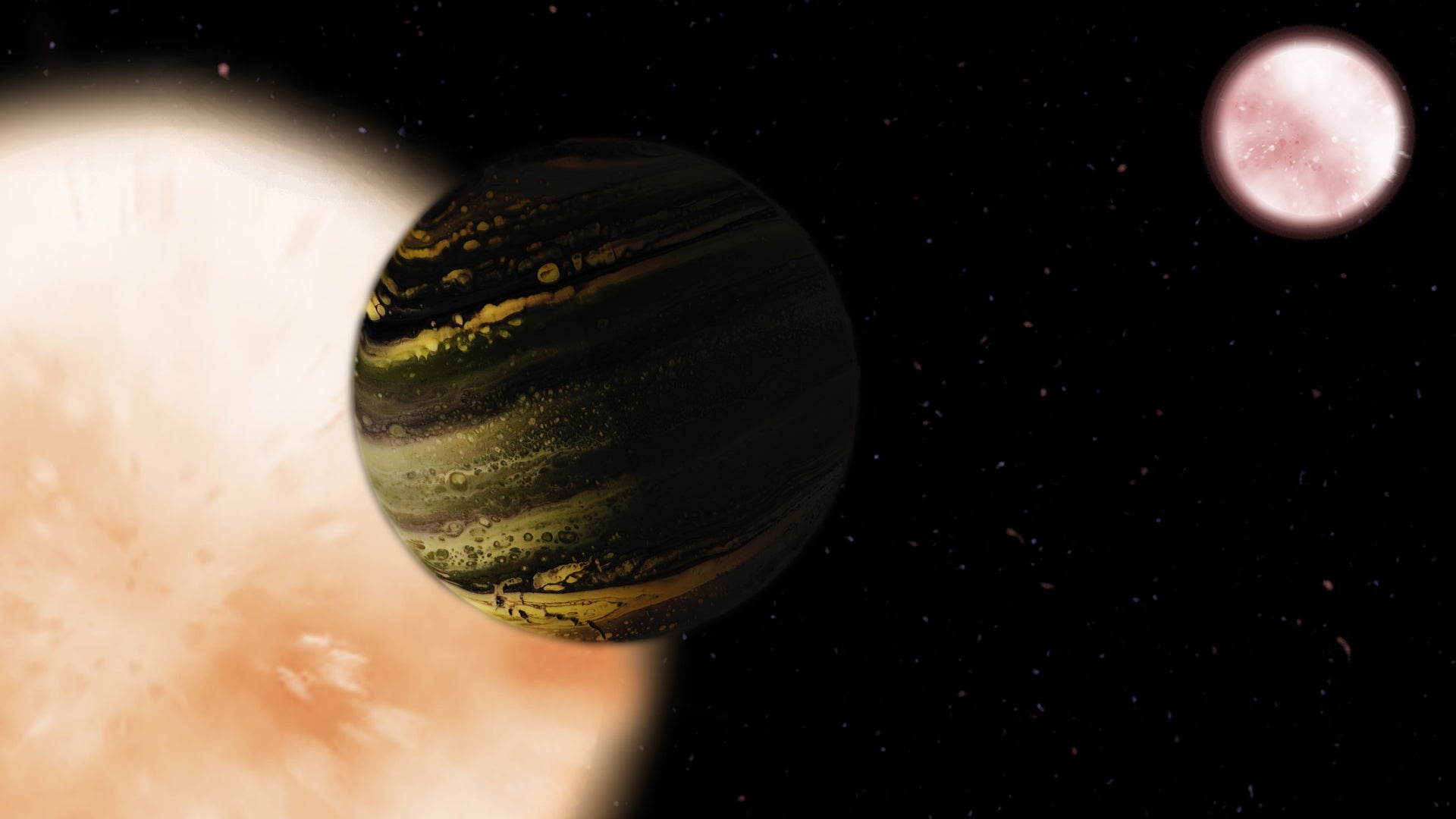Nasa finds new planet in orbit around two different stars

Your support helps us to tell the story
From reproductive rights to climate change to Big Tech, The Independent is on the ground when the story is developing. Whether it's investigating the financials of Elon Musk's pro-Trump PAC or producing our latest documentary, 'The A Word', which shines a light on the American women fighting for reproductive rights, we know how important it is to parse out the facts from the messaging.
At such a critical moment in US history, we need reporters on the ground. Your donation allows us to keep sending journalists to speak to both sides of the story.
The Independent is trusted by Americans across the entire political spectrum. And unlike many other quality news outlets, we choose not to lock Americans out of our reporting and analysis with paywalls. We believe quality journalism should be available to everyone, paid for by those who can afford it.
Your support makes all the difference.Nasa has found a new planet in orbit around two stars, using an unprecedented technique.
Researchers were able to use Nasa’s Transiting Exoplanet Survey Satellite (TESS) to discover the planet much more quickly than ever before.
Planets in orbit around two stars – scientifically known as circumbinary planets – were once only found in science fiction and theory. But with the work of TESS and its predecessor, the Kepler Space Telescope, researchers have found 14 such bodies.
Given the added complexity of orbiting around two stars rather than the usual one, such planets can be especially difficult to find, and spotting them can take extra time.
But the new technique – detailed in a paper published in the Astronomical Journal – allowed the researchers to do so relatively quickly.
“Detecting circumbinary planets is much more complicated than detecting planets orbiting single stars,” said Nader Haghighipour, a scientists at the Planetary Science Institute and an author on that paper.
“The most promising technique for detecting circumbinary planets is transit photometry, which measures drops in starlight caused by those planets whose orbits are oriented in space such that they periodically pass between their stars and the telescope. In this technique, the measurements of the decrease in the intensity of the light of a star is used to infer the existence of a planet.
“To determine the orbit of the planet, precisely, at least three transit events are required. This becomes complicated when a planet orbits a double-star system because transits will not happen with the same interval over the same star. The planet may transit one star and then transit the other before transiting the first star again, and so on.”
It is not just difficult work but lengthy work, too – the orbits of circumbinary planets is a lot longer than those of their binary stars. Researchers therefore need to spend much longer waiting for those three transits.
However, the new paper shows a way that dramatically speeds that up. Ordinarily, the fact that TESS only looks atone patch of the sky for 27 days would make such observations impossible – but the new findings show that they only actually need to spot two journeys.
“Our group was able to show that despite its short window of observation, it is still possible to use TESS to detect circumbinary planets. The new planet is the proof of the validity, applicability and success of our invented technique,” said Haghighipour, who is the founder of the TESS Circumbinary Planet Working Group.
“This discovery demonstrates that our new technique works and will be able to find many more planets.”
Join our commenting forum
Join thought-provoking conversations, follow other Independent readers and see their replies
Comments